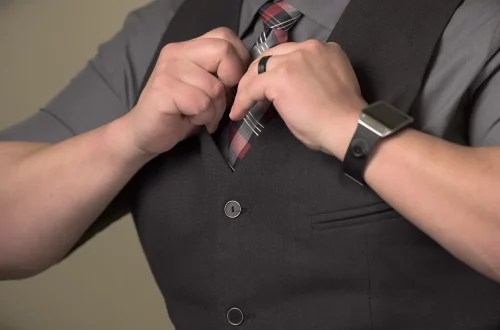
The Ultimate Guide to Choosing the Best Detangle Comb for Your Hair
When it comes to hair care, the tools you use can make a significant difference in the health and appearance of your hair. One essential tool in any hair care regimen is the detangle comb. Unlike traditional brushes, which can cause breakage and damage, a good detangle comb is designed to gently work through knots and tangles without pulling or tugging. This makes it particularly important for individuals with curly, wavy, or thick hair, which is more prone to tangling.
Choosing the right detangle comb is not just about aesthetics; it’s about function and suitability for your specific hair type. With the right comb, you can minimize hair breakage, promote healthier hair, and make your styling routine easier and more enjoyable. Whether you’re looking for something to use in the shower, a tool for everyday detangling, or a specialized comb for styling, there are factors to consider that will help you make an informed decision.
In this guide, we will explore the various types of detangle combs available, the materials they are made from, and how to select the one that best suits your unique hair needs. Understanding these elements can enhance your hair care routine and help you achieve the beautiful locks you desire.
Understanding Different Types of Detangle Combs
Detangle combs come in a variety of shapes, sizes, and designs, each tailored for specific hair types and detangling needs. Understanding the different types can help you choose the most effective one for your hair.
One popular type is the wide-tooth comb. This comb features widely spaced teeth that make it ideal for detangling wet hair. The wide spacing allows you to gently work through knots without causing breakage, which is crucial for maintaining the integrity of your hair. Wide-tooth combs are particularly beneficial for curly or thick hair, as they can easily glide through curls without disrupting the natural pattern.
Another common option is the paddle comb. Paddle combs have a flat, wide surface and are often used for detangling longer hair. These combs can cover more surface area at once, making them efficient for removing tangles. They are suitable for both wet and dry hair, providing versatility in your hair care routine.
For those with finer or more delicate hair, a fine-tooth comb may be the best choice. Although it’s not typically recommended for detangling, it can help smooth out any remaining tangles after using a wider comb. This type of comb is also great for creating precise parts and styles.
Lastly, there are specialized detangling brushes designed with flexible bristles that can bend and move with your hair. These brushes work well for all hair types and are effective in minimizing breakage. They often come with ergonomic designs that make them comfortable to hold, making your detangling routine less of a chore.
Choosing the right type of detangle comb requires considering your hair type and the specific issues you may encounter. Whether you have straight, wavy, curly, or coily hair, there’s a detangling tool designed just for you.
Materials Matter: Choosing the Right Detangle Comb
The material of your detangle comb can significantly impact its effectiveness and the health of your hair. Different materials offer various benefits, and understanding these can help you make a more informed choice.
Plastic combs are the most common type and are often the most affordable. They are lightweight, easy to clean, and come in various styles. However, some plastic combs can create static electricity, which can lead to frizz, especially in dry environments. If you choose a plastic comb, look for one that has rounded teeth to help minimize damage.
Wooden combs are another excellent option, especially for those with curly or coarse hair. Wood is naturally anti-static, helping to reduce frizz and keep your hair smooth. Additionally, wooden combs are sturdy and can last for years with proper care. They are also biodegradable, making them an environmentally friendly choice.
Metal combs, while less common, can offer durability and precision for styling, but they are not ideal for detangling. Metal can snag on hair, leading to breakage, so it’s best to use them sparingly or in conjunction with other combs.
Lastly, there are silicone and rubber combs, which are designed to be gentle on the hair and often feature flexible bristles. These materials help reduce tension and friction, making them suitable for detangling wet hair. They can be a bit pricier but are worth the investment for those seeking to protect their hair.
Overall, the best material for your detangle comb will depend on your hair type and personal preferences. Always consider how the material interacts with your hair to ensure you’re making the best choice for your hair health.
Techniques for Effective Detangling
Using a detangle comb effectively involves more than just selecting the right tool; it also requires the right techniques for optimal results. Proper detangling can make a significant difference in maintaining hair health and minimizing damage.
First and foremost, always detangle your hair when it is wet or damp. Wet hair is more pliable, making it easier to work through knots. To avoid breakage, apply a leave-in conditioner or detangling spray before you begin. This will provide additional slip, allowing your comb to glide through your hair more smoothly.
Start at the ends of your hair and work your way up. This technique helps to gently work through tangles without pulling or tugging at the roots, which can lead to breakage and discomfort. Use slow, gentle strokes, and avoid yanking on any stubborn knots. If you encounter a particularly tough tangle, try using your fingers to carefully separate the hair before using the comb.
It’s also essential to section your hair while detangling. Divide your hair into manageable sections, especially if you have thick or curly hair. Working in smaller sections can help you focus on each area, ensuring that you are not missing any knots and reducing the risk of pulling.
Lastly, be patient. Detangling can be a time-consuming process, especially for those with long or curly hair. Rushing through it can lead to more damage, so take your time and enjoy the self-care aspect of your hair care routine.
By incorporating these techniques into your detangling process, you can maintain healthier hair and reduce the likelihood of damage over time.
Maintaining Your Detangle Comb for Longevity
Taking care of your detangle comb is essential for ensuring its longevity and maintaining optimal performance. A well-maintained comb can effectively assist in your hair care routine while also promoting healthier hair.
Start by regularly cleaning your comb to remove hair, product buildup, and oils. The frequency of cleaning will depend on your hair type and how often you use the comb, but a good rule of thumb is to clean it at least once every couple of weeks. To clean your comb, use warm soapy water and a soft brush to scrub away any residue. Rinse thoroughly and let it air dry. Avoid using harsh chemicals, as these can damage the material of the comb.
If you’re using a wooden comb, take extra care to condition it occasionally with a natural oil, like jojoba or coconut oil. This will help maintain the integrity of the wood, preventing it from drying out and cracking over time.
Avoid exposing your comb to extreme temperatures and direct sunlight, especially for plastic and wooden combs. Extreme conditions can warp or deteriorate the material, making the comb less effective and potentially harmful to your hair.
Lastly, store your comb in a designated area where it won’t get lost or damaged. A cosmetic pouch or a dedicated hair care drawer can help protect it from unnecessary wear and tear.
By following these maintenance tips, you can extend the life of your detangle comb, ensuring that it continues to serve you well in your hair care routine for years to come.
In conclusion, selecting the best detangle comb for your hair involves understanding the different types available, considering the materials, employing effective detangling techniques, and maintaining your tool for longevity. Remember that healthy hair starts with the right tools, and investing in a quality detangle comb is a step towards achieving beautiful, manageable hair.
**Disclaimer:** This article is not intended as medical advice. For any health-related issues, please consult a qualified healthcare professional.




